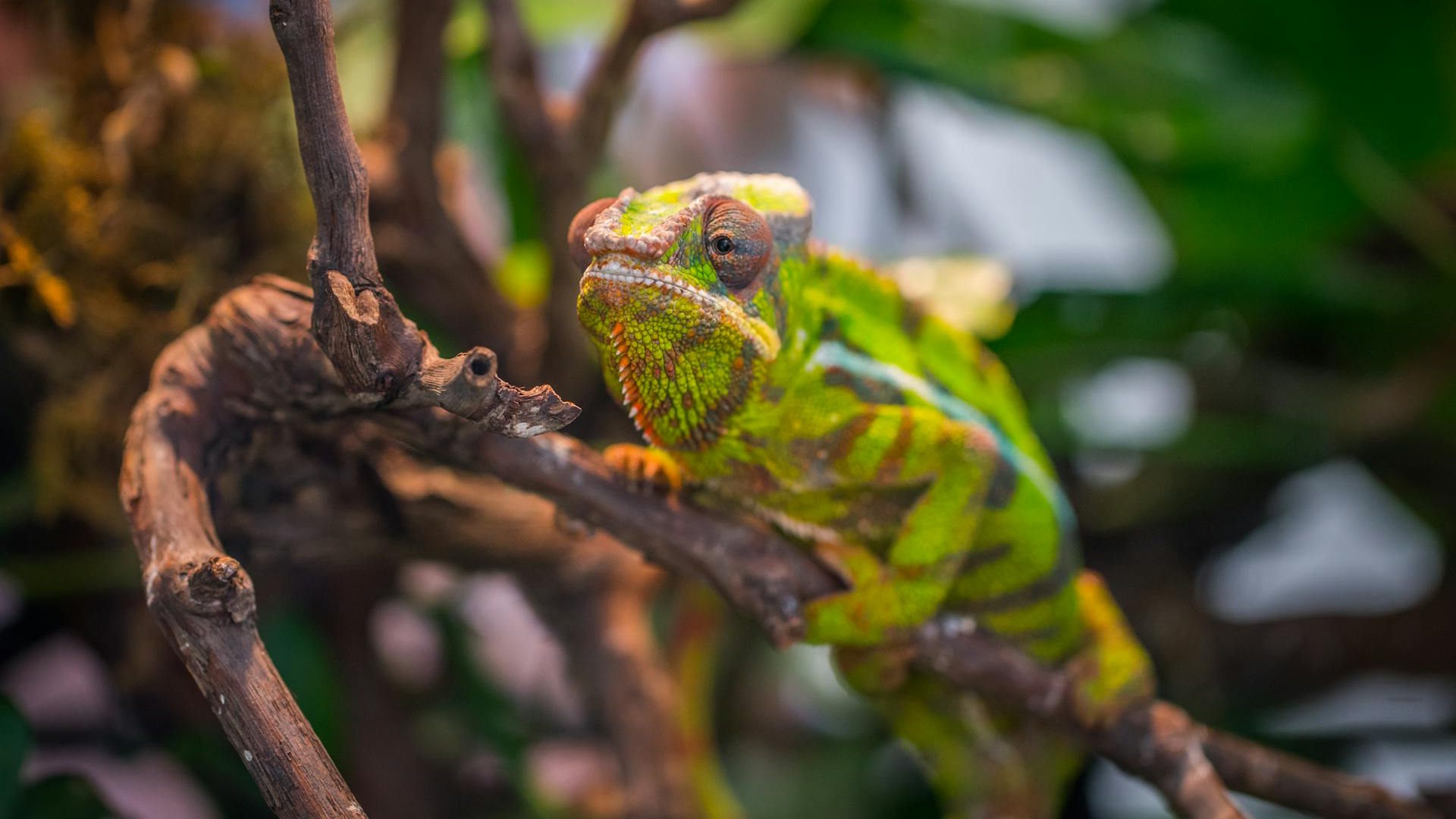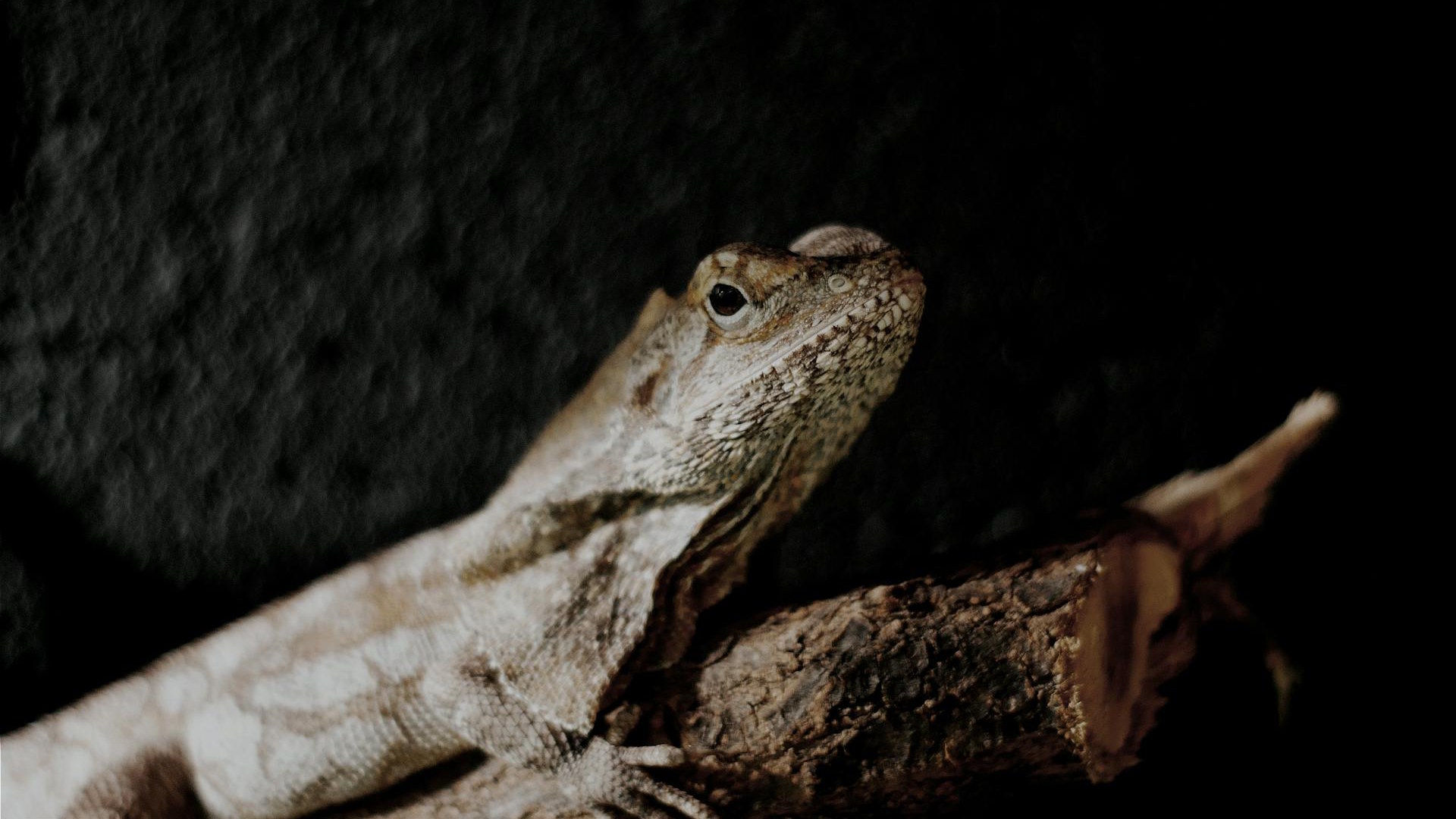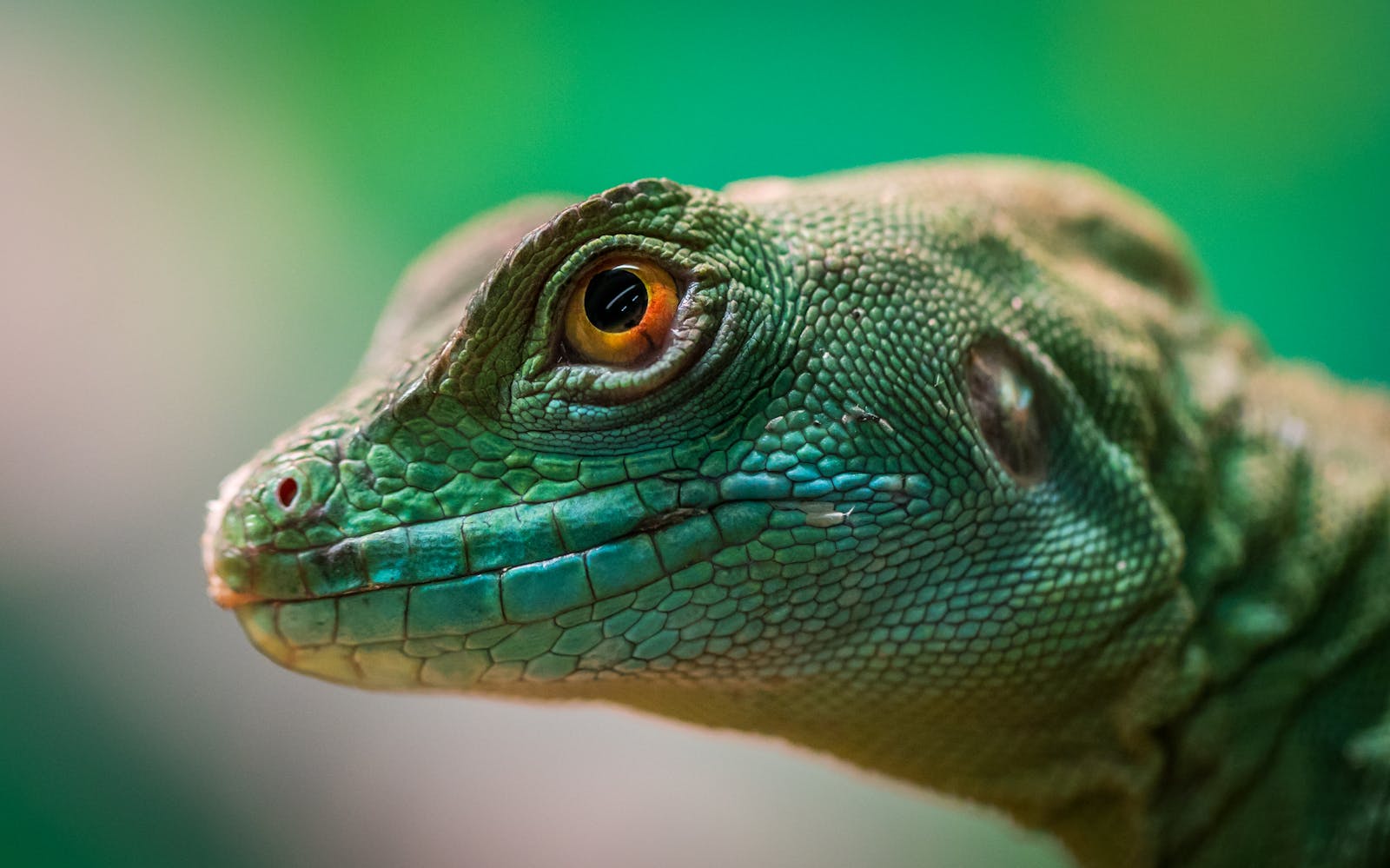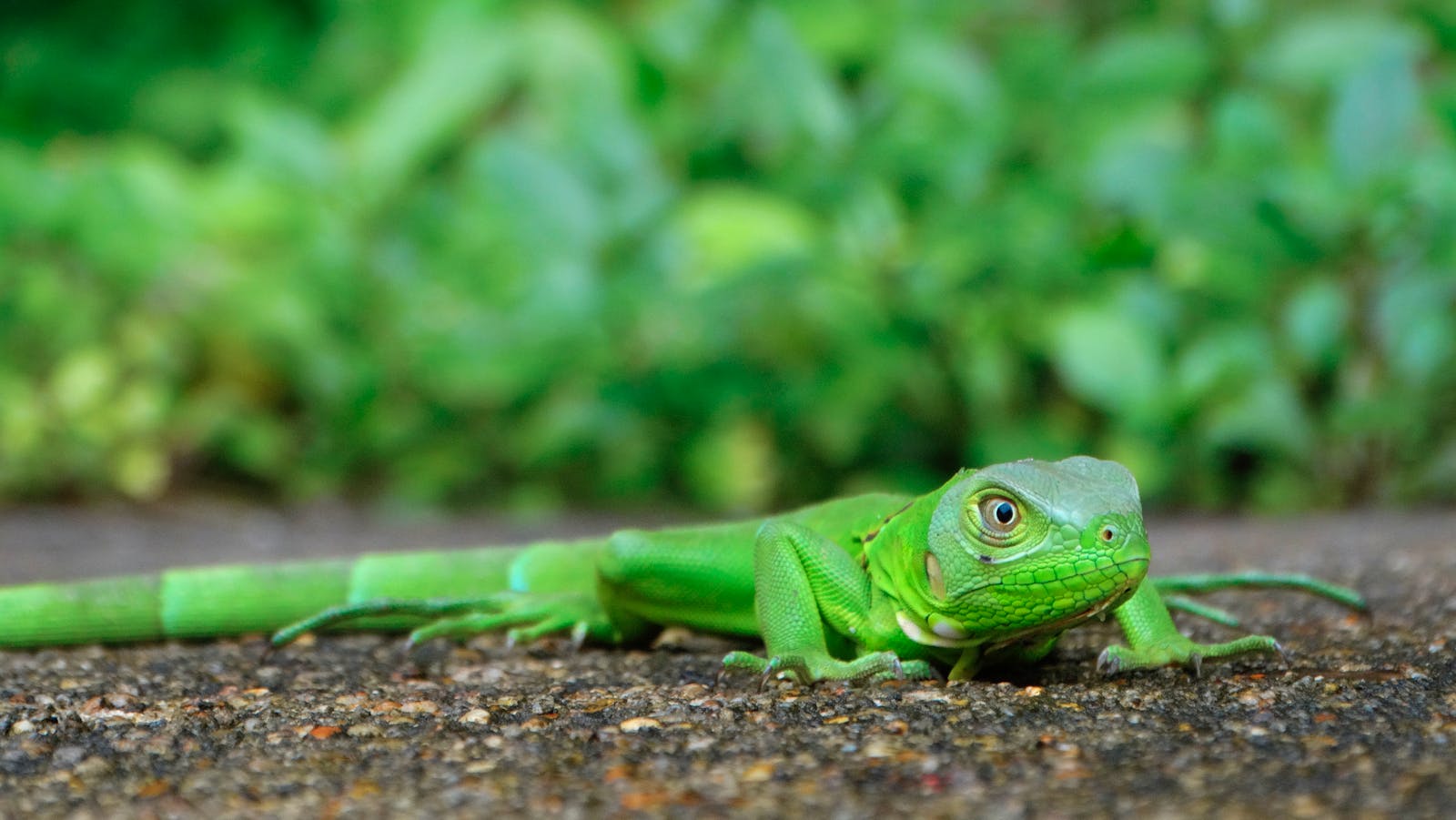The reptile world is a fascinating realm of scales, venom, and surprising adaptations. When we think of reptilian predators, our minds typically conjure images of massive crocodiles, lightning-fast monitor lizards, or perhaps venomous snakes striking with deadly precision. However, hiding among these obvious hunters is a predator so unexpected and ingeniously adapted that it challenges our understanding of reptilian capabilities. This article explores the remarkable hunting prowess of the chameleon – a slow-moving, seemingly passive reptile that has evolved one of the most sophisticated predatory mechanisms in the animal kingdom. From their extraordinary ballistic tongues to their calculated hunting strategies, chameleons represent nature’s perfect example of how appearances can be deceiving in the eternal dance of predator and prey.
The Deceptive Appearance of Chameleons

At first glance, chameleons hardly seem like formidable hunters with their slow, methodical movements and seemingly docile demeanor. Their swaying gait and deliberate pace give the impression of a creature more concerned with avoiding predation than being a predator itself. This deceptive appearance serves chameleons well, allowing them to appear non-threatening to potential prey while they carefully position themselves for a strike. Their eyes, which rotate independently in different directions, contribute to this passive appearance while actually providing them with nearly 360-degree vision – perfect for spotting prey without betraying their hunting intentions. This masterful deception is the first step in what makes chameleons such unexpected and effective predators in the reptile kingdom.
The Ballistic Tongue: Nature’s Perfect Weapon
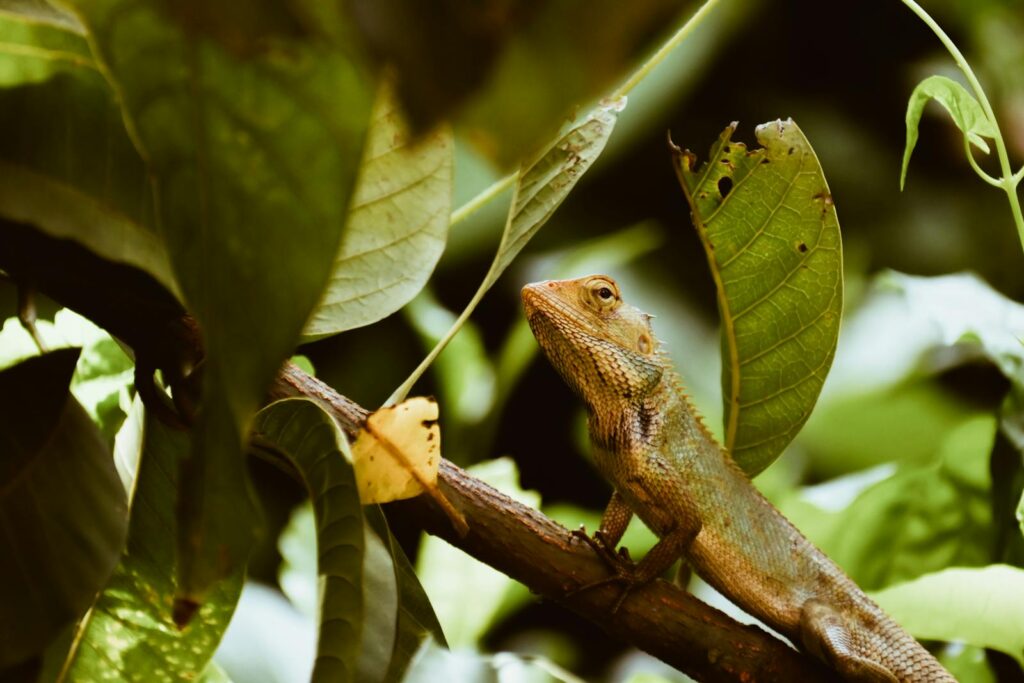
The chameleon’s primary hunting tool – its projectile tongue – stands as one of the most remarkable adaptations in the animal kingdom. This specialized organ can extend to more than twice the chameleon’s body length in just a fraction of a second, accelerating from 0 to 60 mph in 1/100th of a second – faster than most sports cars. The mechanics behind this biological wonder involve a complex muscular structure and a specialized tongue bone called the hyoid apparatus, which acts like a spring-loaded system when released. At the tip of the tongue sits a muscular bulb coated with sticky saliva that effectively glues prey to the tongue upon impact. The precision and power of this biological projectile weapon allow chameleons to capture prey from surprising distances while barely moving their bodies, making them ambush predators of exceptional capability.
Evolutionary Development of the Chameleon’s Hunting Mechanism
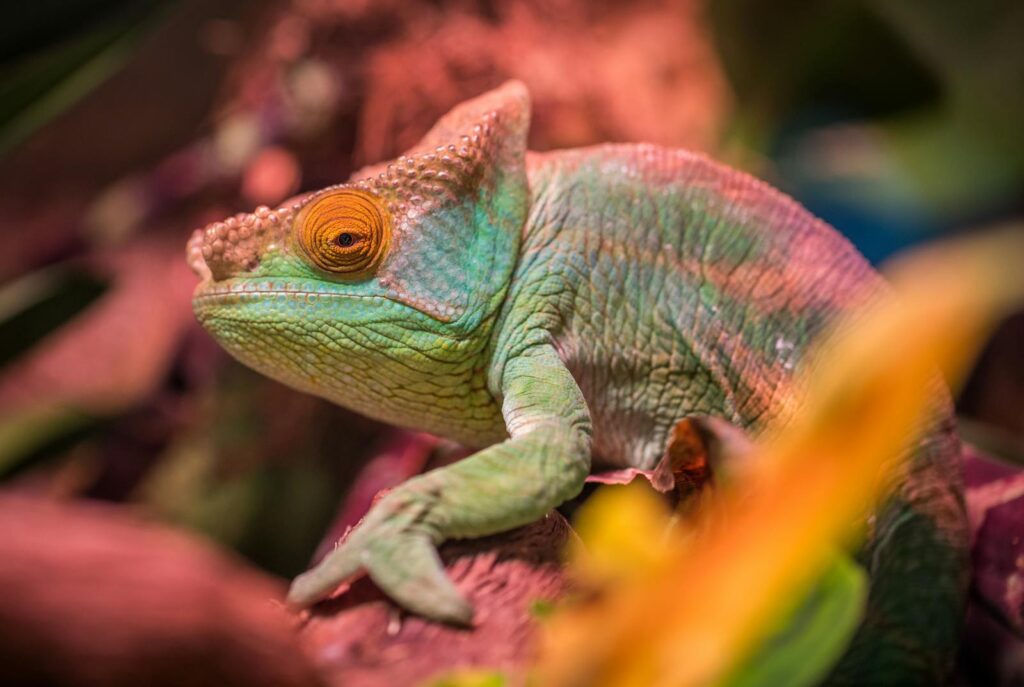
The evolution of the chameleon’s extraordinary predatory adaptations represents millions of years of natural selection perfecting a unique hunting strategy. Scientists believe the ballistic tongue mechanism developed gradually as an extension of the basic tongue projection found in many reptiles, becoming increasingly specialized as chameleons adapted to arboreal environments where swift, precise strikes offered significant hunting advantages. Fossil evidence suggests that early chameleon ancestors had much shorter tongues, with the extreme projection capabilities evolving later as competition for food resources intensified. The remarkable acceleration of the chameleon’s tongue – which can reach forces of up to 41g during projection – developed in response to the need to capture fast-moving insects without alerting them through body movement. This evolutionary journey has produced one of the most biomechanically efficient predatory systems known to science, studied extensively by engineers seeking to develop similar mechanisms for human applications.
The Role of Color-Changing in Predation
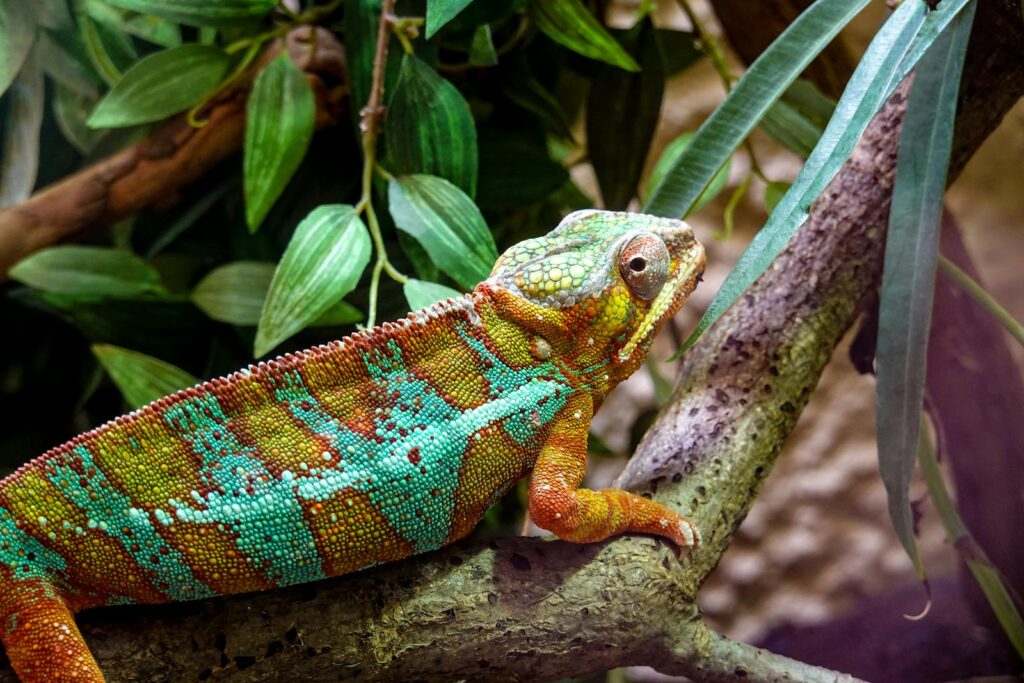
Contrary to popular belief, the chameleon’s famous color-changing ability serves more purposes than simple camouflage – it plays a significant role in their hunting strategy. While hunting, many chameleon species maintain neutral, subdued coloration that helps them blend into surrounding vegetation, effectively becoming invisible to both potential prey and predators. This cryptic coloration allows them to inch closer to unsuspecting insects without detection. Some research suggests that certain chameleon species may even use specific color patterns to break up their outline or create visual disruptions that make their shape less recognizable to prey. Additionally, the chameleon’s color-changing serves as an important energy conservation mechanism during hunting, as maintaining appropriate body temperature through color modulation ensures they have sufficient energy reserves for the explosive muscle contractions required during tongue projection.
Specialized Hunting Vision
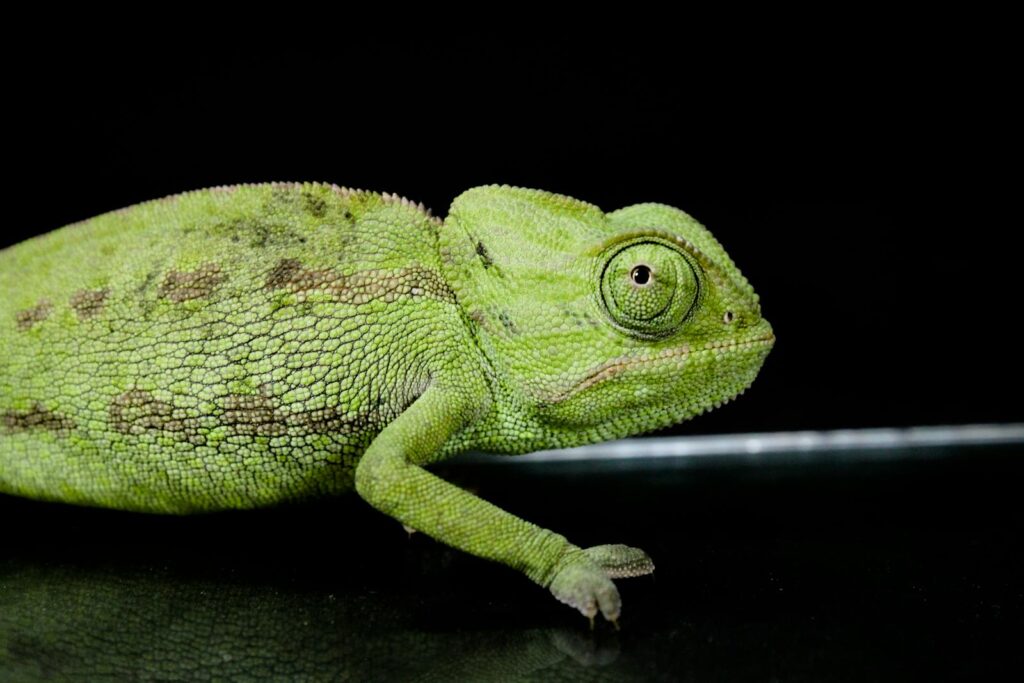
Chameleons possess one of the most specialized visual systems among vertebrates, perfectly adapted for their predatory lifestyle. Their eyes operate independently, allowing them to monitor a nearly complete 360-degree field of vision simultaneously – a feature that lets them spot potential prey in almost any direction without moving their heads. When a chameleon locates prey, it can focus both eyes forward to gain exceptional depth perception, crucial for accurately calculating the precise distance before launching its tongue. Their vision is among the most acute in the reptile world, with the ability to see in both ultraviolet and visible light spectrums and detect movement from remarkable distances. Most impressively, research has shown that chameleons can focus at different depths simultaneously with each eye, effectively creating a natural bifocal system that lets them track multiple potential prey items at different distances – a truly unexpected advantage for such an apparently slow-moving predator.
Surprising Dietary Versatility
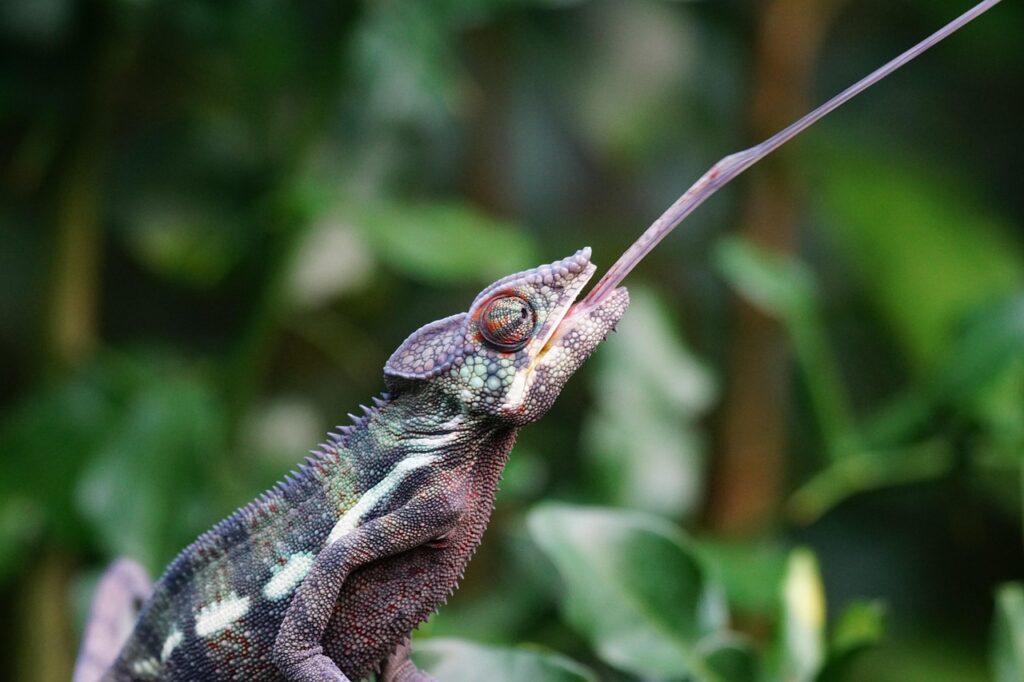
While primarily insectivorous, many chameleon species display a surprising versatility in their predatory diet that exceeds expectations for such specialized hunters. Larger chameleon species have been documented capturing and consuming small birds, lizards, and even other chameleons, demonstrating predatory ambitions far beyond simple insect-eating. The Parson’s chameleon of Madagascar, one of the largest species, has been observed successfully hunting small mammals and reptiles with its extraordinarily powerful tongue projection. This dietary versatility showcases the effectiveness of their hunting adaptation across a wide range of prey types and sizes. Researchers have documented chameleons adjusting their hunting techniques based on prey type – using slower, more deliberate approaches for less mobile prey and quicker, more precisely calculated strikes for fast-moving insects, demonstrating unexpected cognitive flexibility in their predatory behavior.
Calculated Hunting Patience
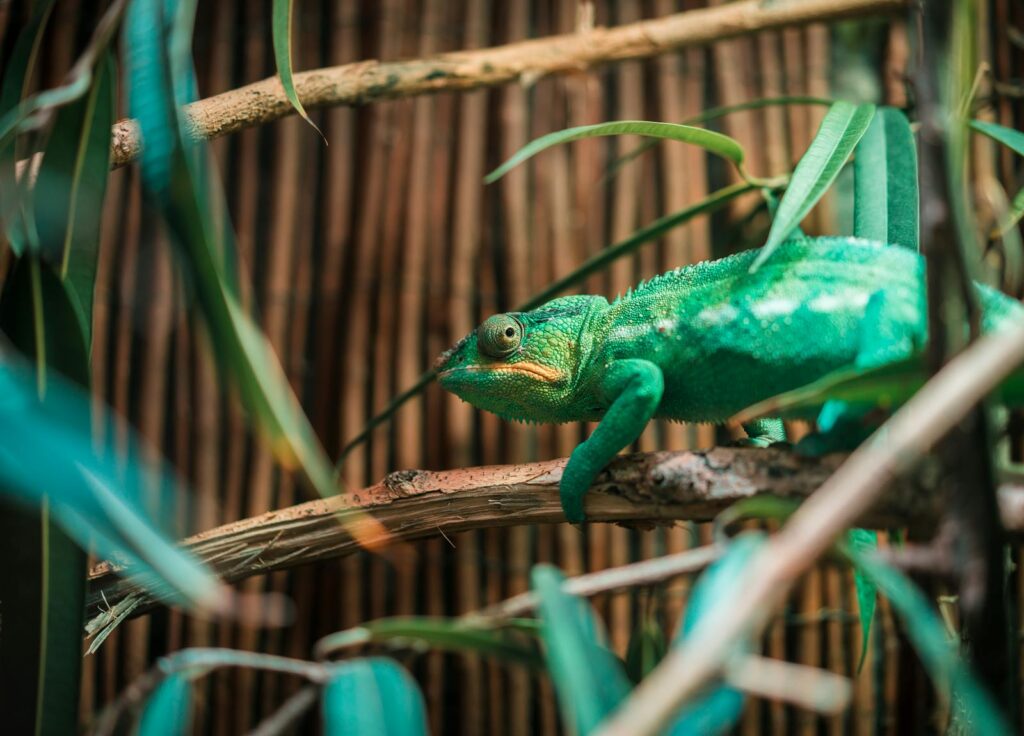
Perhaps one of the most unexpected aspects of chameleon predation is their extraordinary patience during hunting – a stark contrast to many other reptilian predators that rely on bursts of speed. Chameleons can remain motionless for hours, moving only their eyes as they wait for the perfect moment to strike. This calculated patience allows them to conserve energy while maximizing their chances of successful prey capture. Studies have documented chameleons abandoning potential strikes when conditions aren’t optimal, showcasing a level of predatory restraint uncommon in the reptile world. Their hunting strategy involves detailed assessment of variables including distance, prey movement patterns, intervening obstacles, and even wind conditions before committing to a tongue projection – revealing unexpected complexity in what appears to be simple ambush predation.
Comparison to Other Reptilian Predators

When compared to more conventional reptilian predators like monitor lizards or crocodilians, chameleons represent a radical evolutionary divergence in hunting strategy. Where most predatory reptiles rely on some combination of speed, strength, or venom, chameleons have developed a completely different approach based on precision, specialized equipment, and patience. Unlike snakes that use venom or constriction, or large lizards that employ powerful jaws and claws, chameleons have invested evolutionary resources into developing a single, highly specialized hunting tool. This specialization stands in marked contrast to the generalist approach of many reptilian predators and demonstrates how evolutionary pressures can produce unexpected solutions to the universal challenge of capturing food. The chameleon’s success as a predator despite its slow movements and lack of traditional predatory adaptations highlights the diversity of effective hunting strategies within the reptile kingdom.
The Biomechanics of the Perfect Strike

The biomechanics behind a chameleon’s predatory strike represent one of nature’s most impressive physics demonstrations. The tongue acceleration occurs through an unusual mechanism where collagen tissues in the tongue rapidly convert from a coiled to uncoiled state, releasing stored elastic energy similar to a spring-loaded system. High-speed camera studies have revealed that the tongue’s central accelerator muscle, which makes up only 3% of the chameleon’s body weight, can generate forces equivalent to 14,000 watts per kilogram – making it one of the highest power-output muscles in the animal kingdom. The precision of this system is equally remarkable, with chameleons demonstrating the ability to adjust tongue projection force and distance based on prey location with accuracy measured in millimeters. This combination of speed, power, and precision makes the chameleon’s predatory strike one of the most biomechanically efficient in nature, drawing significant interest from robotics engineers attempting to recreate similar mechanisms.
Chameleons as Ambush Specialists
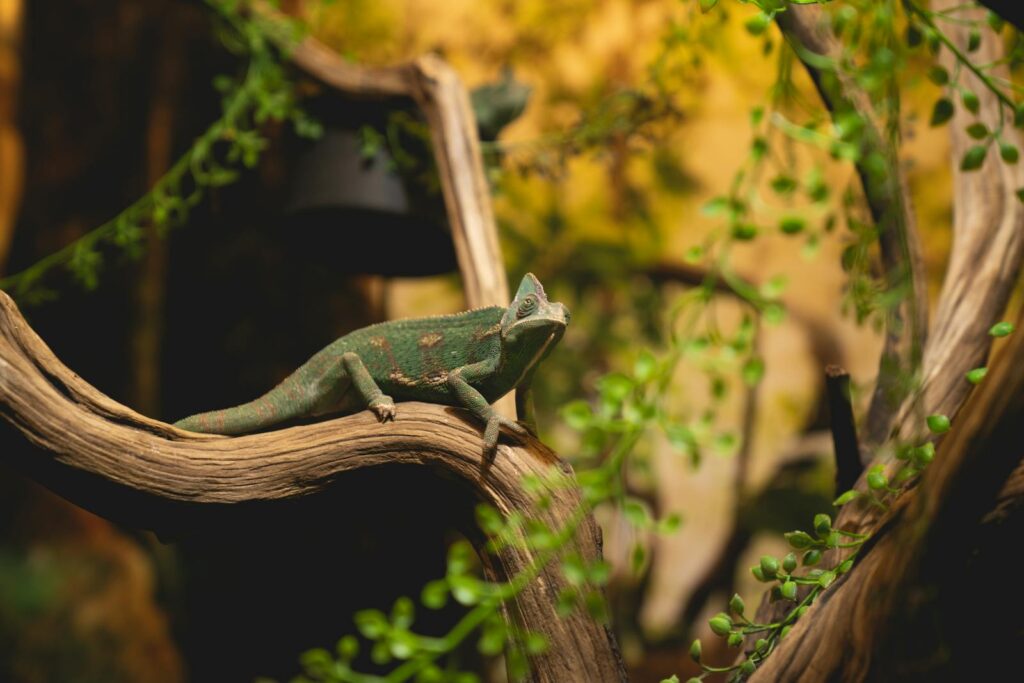
The chameleon’s entire morphology and behavior pattern is optimized for ambush predation, representing perhaps the purest example of this hunting strategy in the reptile world. Their specialized feet, with opposable digits arranged in bundles of two and three, allow them to grasp branches securely while remaining motionless for extended periods – a critical adaptation for an ambush predator. The chameleon’s laterally compressed body shape presents a minimal profile when viewed head-on by potential prey, effectively reducing their visibility when positioned on branches. Even their characteristic swaying movement serves their ambush strategy, mimicking the natural movement of leaves and branches in the wind and making their slow advance toward prey less detectable. This comprehensive suite of adaptations for ambush predation has allowed chameleons to occupy a unique predatory niche that would be unavailable to more conventional reptilian hunters.
The Cognitive Aspects of Chameleon Predation
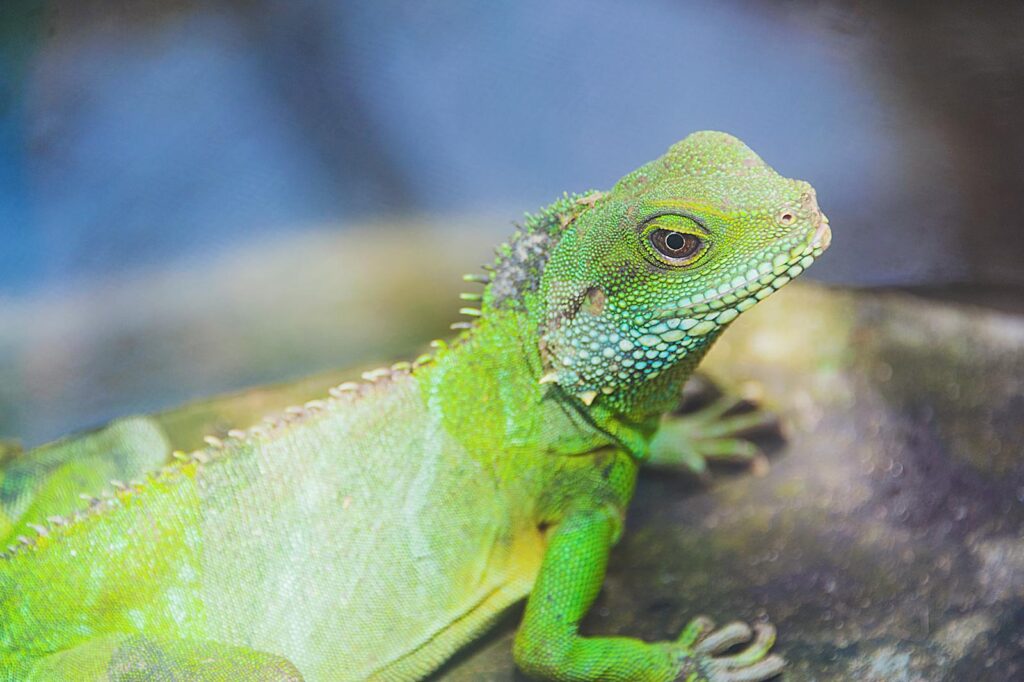
Recent research has revealed unexpected cognitive complexity underlying chameleon hunting behavior, challenging the notion that reptilian predation relies primarily on instinct rather than calculation. Laboratory studies have demonstrated that chameleons possess the ability to learn from previous hunting experiences, adjusting their strike distance and force based on past successes and failures. More remarkably, chameleons display the capacity for predictive tracking – anticipating where fast-moving prey will be rather than simply reacting to current positions, a cognitive skill previously attributed mainly to mammalian predators. Observational studies have documented chameleons abandoning hunting attempts when variables aren’t favorable and repositioning themselves for better angles of attack, suggesting a level of predatory decision-making beyond simple stimulus-response patterns. These cognitive abilities, combined with their specialized physical adaptations, elevate chameleons from mere instinctual hunters to calculated predators with unexpected complexity in their hunting approach.
Conservation Challenges for Nature’s Unexpected Predator
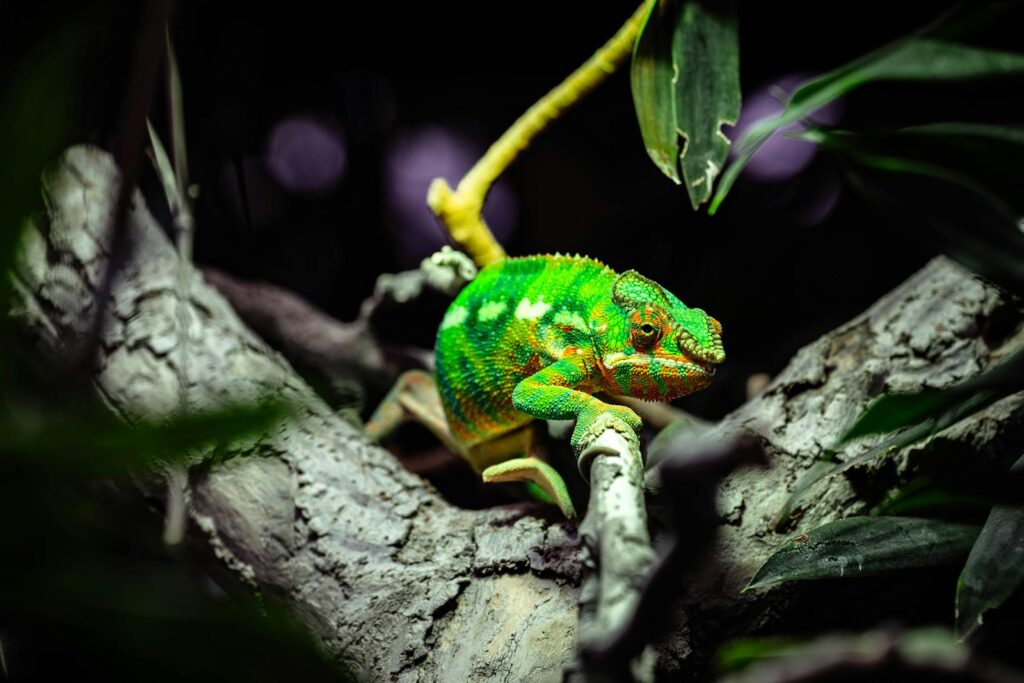
Despite their remarkable predatory adaptations, many chameleon species face significant conservation challenges that threaten their continued existence as specialized hunters. Habitat destruction, particularly the loss of specific forest microhabitats required for their ambush hunting strategy, has severely impacted chameleon populations worldwide. The specialized nature of their predation makes chameleons particularly vulnerable to environmental changes, as they cannot easily adapt their hunting techniques to dramatically altered habitats. Climate change presents additional challenges, as rising temperatures affect the activity patterns of both chameleons and their insect prey, potentially disrupting the precise timing required for successful hunting. The illegal wildlife trade further threatens many chameleon species, with their unique hunting adaptations and color-changing abilities making them attractive targets for collection, removing genetically important individuals from already fragile populations and undermining conservation efforts aimed at preserving these evolutionary marvels.
Conclusion
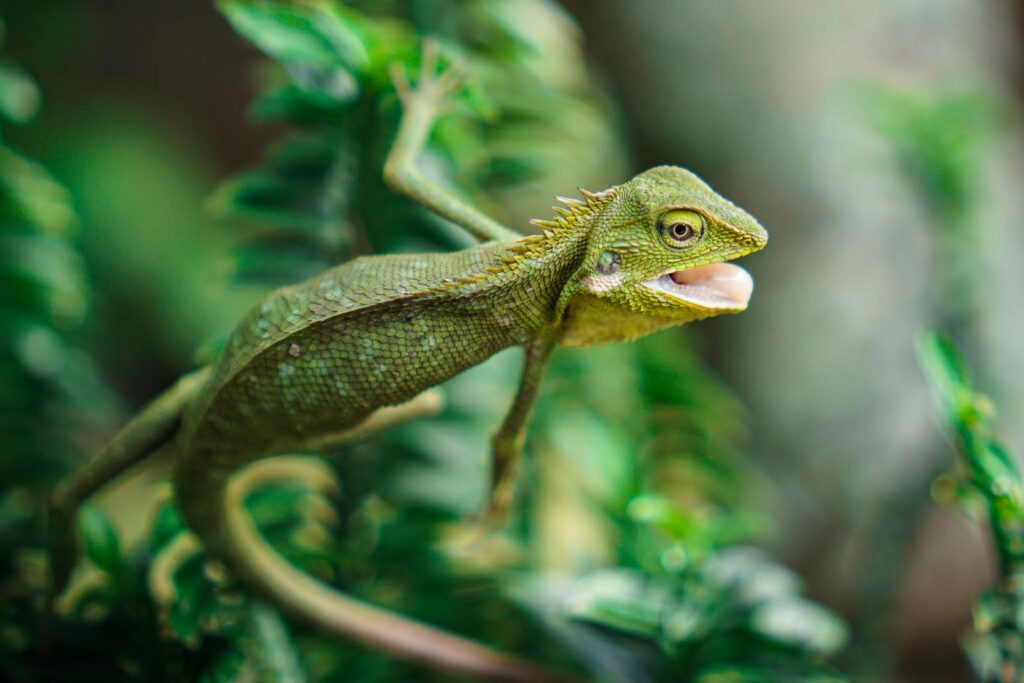
The chameleon stands as nature’s testament to the unexpected paths that evolution can take in the development of efficient predators. While lacking the obvious predatory features we typically associate with fearsome hunters – powerful jaws, venom, or impressive speed – chameleons have instead perfected a specialized hunting strategy that combines patience, precision, and one of the most remarkable biological mechanisms in the animal kingdom. Their success challenges our preconceptions about what makes an effective predator and demonstrates that evolutionary innovation often produces surprising solutions to the universal challenge of securing food. As we work to conserve these remarkable reptiles and the habitats they depend on, we preserve not just another species, but one of nature’s most unexpected and ingenious predatory adaptations – a living example that appearances can indeed be deceiving in the complex dance between predator and prey.

